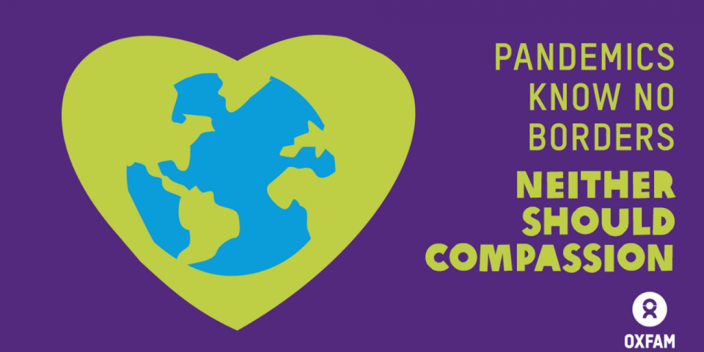As the outbreak of the novel coronavirus COVID-19 continues, Oxfam is concerned about the impact it could have on the most vulnerable communities in poorer countries across the world. Drawing from substantial expertise and lessons learned from past disease outbreaks, we are prepared and ready to respond. Meanwhile, we have also put measures in place to protect the health and security of our staff.
What is COVID-19?
Coronaviruses are a large family of viruses that are known to cause illness ranging from the common cold to more severe diseases such as Severe Acute Respiratory Syndrome (SARS). COVID-19 is a new strain of coronavirus that has not been previously identified in humans. The main source of the outbreak is still unknown but, considering previous experiences of coronaviruses, it is most likely that the virus made the jump to humans from animals.
Symptoms: In COVID-19, the symptoms are very similar to the common cold or flu, including fever, cough, sore throat and/or lethargy. Some people develop more symptoms such as shortness of breath and breathing difficulties. In more severe cases, the infection can cause pneumonia, severe acute respiratory syndrome, kidney failure, and even death.
Transmission: It is thought that COVID-19 may be transmitted by person-to-person contact (through the air by coughing and sneezing, or through close personal contact such as touching or shaking hands) or by touching an object or surface with the virus on it, then touching your mouth, nose, or eyes before washing your hands. It is not known how long the virus can survive on different surfaces as yet.
Treatment: There is no specific treatment for the disease caused by the novel coronavirus. However, many of the symptoms can be treated, and therefore, treatment is based on the patient’s clinical condition. Current analysis shows 97-98% of those infected with COVID-19 survive the illness, and 80% of those infected show no severe symptoms.
How to reduce the risk of infection?
No matter where we are, we can all minimize risk by practicing good hygiene:
Wear a face mask when going out to public spaces.
Wash your hands regularly with soap and water/hand sanitizer.
Cough and sneeze into tissues or into a flexed elbow.
Avoid touching your eyes, nose, and mouth.
Wash food before eating and avoid raw or uncooked food.
Avoid using public transport if you do develop symptoms of the flu.
How is Oxfam responding?
Oxfam has substantial expertise in public health work and our preparedness planning for COVID-19 is informed by lessons from past disease outbreaks including Zika and Ebola. We are working now to support our program teams across more than 65 countries on how best to respond operationally to COVID-19 among the millions of people we support.
We’re already helping people to minimize the risk of infection by providing them with accurate information and advice in local languages. Our teams are increasing the delivery of soap, sanitation services including handwashing facilities, and clean water especially to people in higher-risk environments such as refugee camps or crowded urban areas.
How do we protect the health and security of our staff?
Oxfam has a comprehensive COVID-19 Staff Health protocol and has socialized best practice procedures for all our staff to follow in hygiene and infection management. At Oxfam in Laos, we have cleaned and disinfected our office regularly, established travel restriction warnings and consultations, and encouraged all staff to work from home until further notice. We have also developed contingency plans in the event of office closures.
Given that our programs are predominantly led, managed and staffed by national staff, and because we hold reserves and procure our goods and services locally where possible, we are hoping to minimize disruptions. However, we are certainly expecting that our operations will be increasingly affected.
Our concerns for the most vulnerable
Oxfam is very concerned that when COVID-19 broke out in Laos, marginalized communities suffer the most. They are women, poor people, informal or migrant workers working in the production/service industries,.. that have to live and work in insecure environments with high exposure to the disease. Companies are cutting down on their human resources and job loss increases as the pandemic prolongs. Informal workers are not part of social protection and still have to make ends meet on the streets.
On another note, a large portion of laborers and service workers are women, and they are on the frontline of infection risk. Their shoulders also carry the vast burden of unpaid care which is bound to increase dramatically, whether caring for sick relatives or looking after children at home since schools are now closed.
In the face of a global pandemic, it doesn’t matter where you come from, what language you speak, or your cultural background. COVID-19 reminds us that we all deserve to be treated equally and have the same basic rights.
Find out more about COVID-19 and Responses from Laos and the Greater Mekong Subregion
